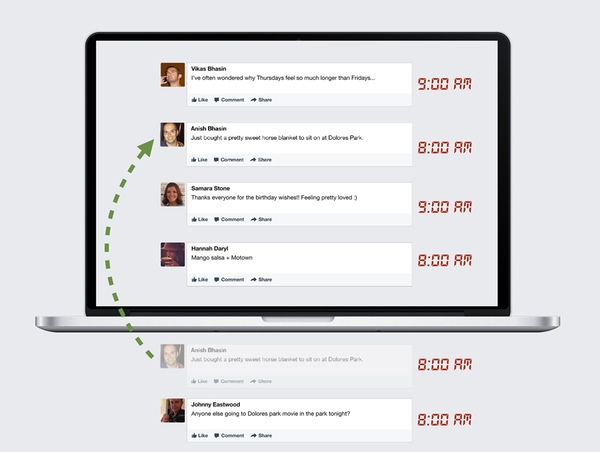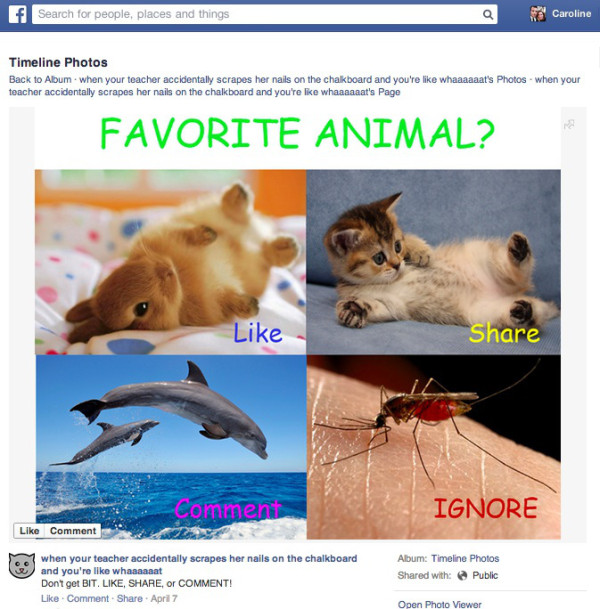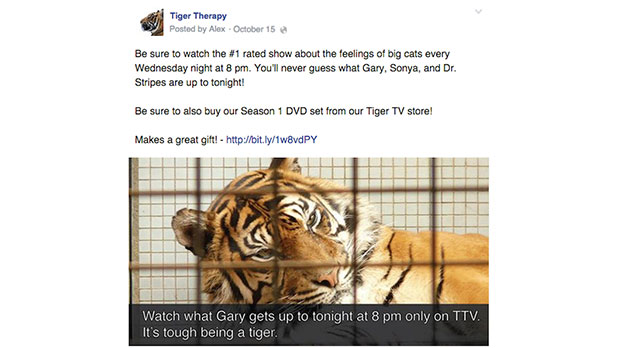Facebook’s News Feed Algorithm: A Guide To Recent Changes
Maximizing your chances of reaching Facebook's massive audience requires paying attention to algorithm adjustments. Here's a roundup of the major tweaks Facebook has announced in the last 2+ years.

It would be difficult to overstate the importance of Facebook’s News Feed to marketers. You can think of it as an epic quest to gain access to Facebook’s multitudes — a search for the Holy Grail of social media visibility.
And Facebook is continually shifting the path — some would say adding roadblocks — by making adjustments to its News Feed algorithm, the complicated set of rules that controls what people see on the social network. Facebook’s aim, of course, is to create the most interesting stream of content possible, personalized for each of its 1.5 billion users. The “perfect personalized newspaper” is how Facebook CEO Mark Zuckerberg terms it.
In search of perfection, Facebook engineers constantly tweak the algorithm, using machine learning to study how people react and engage with content from friends and Pages. It’s complicated — two years ago, the algorithm was said to weigh as many as 100,000 factors — and getting more so over time.
For marketers, the effort to be a part of that content mix keeps getting tougher, and organic reach has plunged over the past few years. Much of the drop-off can be blamed on increased competition for space on the News Feed, with Facebook adding nearly half a billion users in the last three years, and the fact that there are now 45 million business Pages, all vying for people’s limited attention spans.
In that environment, Facebook marketers are looking for an edge, a road map to help them find their way into consumers’ Facebook feeds.
Fortunately, for the last two years, Facebook has been regularly signaling its most significant adjustments to the algorithm. It’s not an explicit set of instructions — like Google’s PageRank algorithm, Facebook’s is still mostly a black box — but the wise Facebook Page administrator reads Facebook’s News Feed FYI blog closely for hints.
To help you interpret the tea leaves, we’ve put together a roundup of the changes over the last 2+ years.
August 2013: Say Farewell to EdgeRank
In the beginning, there was EdgeRank, Facebook’s term for the algorithm, but in August 2013, the company said it had stopped using the term internally 2 1/2 years previously when it added machine learning to the mix. Facebook’s belated announcement of the name dump coincided with an effort to be more transparent about algorithm changes, the introduction of News Feed FYI and the company explaining how the algorithm works in greater detail then it had ever before.
The original EdgeRank signals — affinity, weight and time decay — were joined by other factors like the type of content a person tends to interact with, whether he or she clicks on ads, speed of connection, hiding posts or reporting spam and relationship settings with other people and Pages.
“The easiest analogy is to search engines and how they rank web pages,” Facebook’s Lars Backstrom told Marketing Land at the time. “It’s like comparing the Google of today with Alta Vista. Both Google and Bing have a lot of new signals, like personalization, that they use. It’s more sophisticated than the early days of search, when the words on a page were the most important thing.”
Facebook also introduced “story bumping,” the idea that it would push stories that people missed on previous Facebook visits higher in News Feeds, and a “last actor” parameter that took into account people’s most recent 50 interactions. The former was seen as a way that some content might get extended visibility and the latter making it possible that timely content might be seen more.

August 2013: Favoring High-Quality Content
One of Facebook’s first moves after promising to be more transparent about News Feed changes was to say that it would be favoring “high-quality content.” To help define quality, Facebook surveyed users with questions such as:
- Is this timely and relevant content?” Is this content from a source you would trust?
- Would you share it with friends or recommend it to others?
- Is the content genuinely interesting to you or is it trying to game News Feed distribution (e.g., asking for people to like the content)?
- Would you call this a low-quality post or meme?
- Would you complain about seeing this content in your News Feed?
Facebook then fed the data into a machine-learning system and applied the results to the algorithm. For Page admins, Facebook recommended that they focus on content that people would want to see in their News Feeds. Simple, right?
December 2013: Serving More News, Fewer Memes
Facebook further emphasized favoring of high-quality content by going after memes. People prefer links to stories about current events, their favorite sports teams and shared interests over the latest meme, Facebook said. The company said it would pay more attention to clicks on mobile devices. Further pushing into news distribution, Facebook also started attaching related articles to posts that included links to articles. It also started taking comment activity into account when “story bumping” posts up in people’s feeds.
January 2014: Downgrading Text-Only Updates From Pages
Pages are different from your friends — it’s a humanity thing — Facebook reminded with this adjustment. Text-only updates from Pages aren’t received as well as they are from friends, so Facebook said it would be showing fewer of them to people. Instead, Facebook said, Pages should post more links to provide a “more visual and compelling experience.”
February 2014: Extending Reach By Tagging Other Pages
Facebook said that it would give Pages the ability to reach the audience of other Pages by using the tagging function, for instance, sports site Bleacher Report could tag James Harden’s Page and have a chance to show up in the feeds people like the NBA star’s Page.

April 2014: Dumping Like-Baiting & Spammy Posts
In an effort to cut down on people trying to game the system, Facebook cracked down on Pages that explicitly asked for Likes, comments and shares. It’s a cheap and easy trick — “like if you like this puppy” — and many people were biting, but Facebook said it would throttle such stories. It also limited reach for frequently circulated content, popular photos and stories that are often recycled and posted repeatedly, as well as spammy links to websites that contain only ads or a combination of ads and regularly shared content.

May 2014: Showing Fewer Auto-Posts From Apps
Because auto-posts from apps — a notification that your friend listened to “Happy” on Spotify or burned 500 calories on a run logged by RunKeeper — tend to get less engagement than posts generated by humans, Facebook cut back on the number of bot posts in people’s feeds. Facebook said people often felt surprised or confused by the auto-posts. It was another step away from the frictionless sharing model that Facebook was touting in the distant past, way back in 2012.
June 2014: Giving Native Video A Big Boost
This was the update that launched a video juggernaut. Facebook said it would show more video to people who liked watching video and less to people who tended to skip over moving pictures. Turns out that everyone liked watching video on Facebook. This was before the ALS Ice Bucket Challenge invaded the social network later in the summer of 2014. Video views were growing steadily at the time; Facebook said twice as many people were watching video compared to six months previous. Considering what we now know, the language sounds quaint: “In our early tests, this improvement resulted in more people watching more videos that are relevant to them.”
August 2014: Use Link Format, Not Links In Captions
Pages that had been posting photos with links to stories in the caption were warned away from that practice and encouraged to use Facebook’s native “link format” that pulls in a title, description and picture. Pages had been using the former workaround to take advantage of increased reach for photo posts, but Facebook said people prefer to click the standard links. Since giving people what they want is a Facebook specialty, it said it would start showing people fewer photo and status posts that include plain text links.
August 2014: Down With Click-bait
Click-bait is in the eye of the beholder, but Facebook went after posts that withhold information about a story to entice clicks. It said blatant curiosity gap headlines — “You’ll never believe who fell off the stage” — grab a lot of clicks but annoy the people clicking. To fight that, Facebook started measuring time spent away from Facebook as an indicator for whether people were satisfied about what they found at a link. It also looked at the ratio of people clicking on content compared to how many people were liking and commenting on a story after returning from the link.

September 2014: You Blocked An Ad? Facebook Wonders Why.
In a move to improve ad quality, Facebook started asking for details when people hide ads in their News Feeds. The company wanted more information about why people hide specific ads to better determine whether an ad was spammy or offensive or whether it was just hitting the wrong people. Facebook also said it would pay more attention to hiding signals from people who tend to hide fewer pieces of content.
September 2014: Surfacing More Timely Stories
In a likely response to criticism that Facebook was lagging in serving noteworthy news — filling the feed with ALS challenge videos while Twitter was full of messages about protests in Ferguson, Mo. — the social network said it would take timeliness of posts into account more. It started boosting updates about trending topics, including sports events, TV shows and other shared experiences.
November 2014: Have A Promotion? Buy An Ad
This was a big one, a change that many believe drove the final nail in the coffin for organic reach. Facebook warned Pages against posting “overly promotional” updates, saying that such posts would be shown to fewer people. For those who want to reach people on Facebook with a promotional pitch, the message was clear: buy a Facebook ad.

January 2015: Helping The Hoax Busters
Aiming to reduce the spread of bogus news stories, Facebook started suppressing posts that contain misleading or false information. Identifying such posts falls to Facebook users who were given a new “It’s a false news story” reporting option. If enough people flag a post, Facebook appends “Many people on Facebook have reported that this story contains false information,” and that post will have reduced distribution in the News Feed.
April 2015: More From Friends, Less From Pages
People don’t like to miss posts from their friends, no question. So Facebook updated the algorithm to favor friends’ updates over those posted by Pages, warning that some Pages would see reduced distribution. The details were a bit vague; the blog post announcing the change also said that people who interact with posts from Pages will still see that type of content. Also, posts that friends liked and commented on wouldn’t show up as often, which could limit reach for stories getting a lot of attention. The bottom line is that friends come before brands. Said Facebook: “Overall, pages should continue to post things that people find meaningful and consider these best practices for driving referral traffic.”
June 2015: Boosting Time-Spent Signals
Facebook research showed that people don’t always like, comment on or share posts that they find meaningful, so it adjusted the algorithm to add time spent on posts as a signal of interest. At the time of the update, Facebook said it didn’t expect this to cause significant changes in distribution, but as the company adds more features that keep people on Facebook (e.g., Instant Articles and immersive ads) and continues to favor native video, it’s likely that Pages that post full content rather than links to outside sources will gain an advantage.
June 2015: Adding More Positive Signals For Native Video
People watch a lot of Facebook video — to the tune of four billion views daily as of April 2015 — and with this update, Facebook tried to make sure that people were seeing more of the type of videos they like. Facebook started parsing signals such as whether people activate audio or click to open a video in full screen. By using those inputs in addition to the standard likes, comments and shares, Facebook said it is better able to figure out the type of videos a person is interested in — and show them more of those.
July 2015: Letting People Choose What They See First
A rare user-controlled adjustment, this update gave people the ability to choose the connections they want to see first on their News Feed. People now can designate up to 30 friends and Pages whose posts they don’t want to miss. Such posts will appear at the top of the News Feed. Essentially an algorithm override, this probably didn’t help Page reach considering it would be tough to convince even a brand’s superfans to activate the feature. It couldn’t hurt a business to ask people to add its Page to the preferred list, but persuading people at scale to do that is unlikely.

July 2015: Ignoring Hides From Serial Hiders
A small group of Facebook users hide almost everything they see in their News Feed, even after liking or commenting, so Facebook decided to treat hides from those people as a weaker negative signal. That means such users will see more posts from friends and Pages, which in turn could cause Page admins to see more hides of their content in Insights, Facebook warned. Facebook said it didn’t expect to see significant changes in distribution.
October 2015: Adjusting Content On Low Bandwidth Devices
Facebook is now sniffing out when users are connecting via slower mobile devices and serving them content that is less bandwidth-hogging, for example, fewer videos and more text and photo updates. Aimed at users in the developing world — Facebook’s highest growth area — the changes mean that people will always have content to thumb through, good news for businesses targeting people in emerging markets. It also means that people thumbing through phones in airplane mode will see content loaded when they were last connected to the network.
October 2015: Treating All “Reactions” Just Like A Like
Data from Facebook’s other-than-a-Like buttons will no doubt eventually be rolled into the algorithm and be used to signal the nuanced sentiments of people who click the emoji for Love, Haha, Yay, Wow, Sad and Angry. But for now, during testing of the feature for users in Ireland and Spain, Facebook said that people’s sentiments among those range of emotions will be treated just like a Like in terms of content rankings in the News Feed.

What’s Next?
The only certainty is that the News Feed algorithm will continue to evolve. Whatever the changes in the future, we’ll be watching closely and reporting about how marketers are adjusting to the moving target.
Contributing authors are invited to create content for MarTech and are chosen for their expertise and contribution to the martech community. Our contributors work under the oversight of the editorial staff and contributions are checked for quality and relevance to our readers. MarTech is owned by Semrush. Contributor was not asked to make any direct or indirect mentions of Semrush. The opinions they express are their own.
Related stories